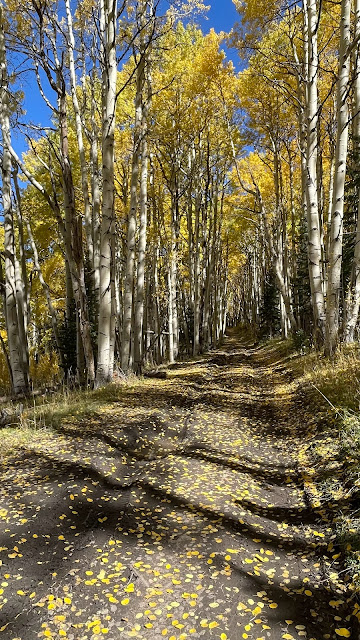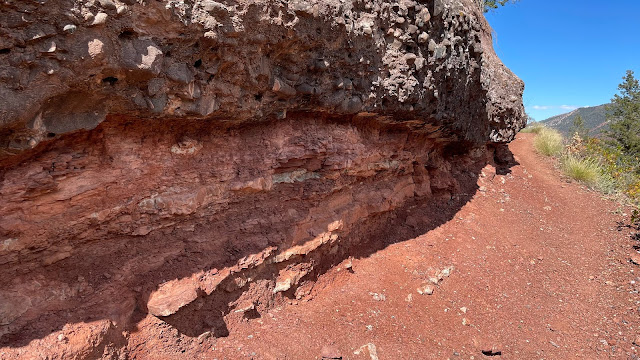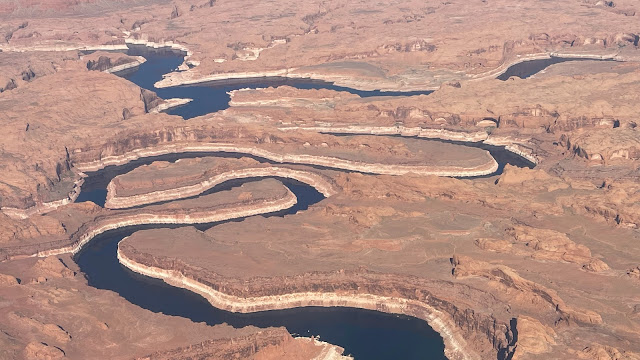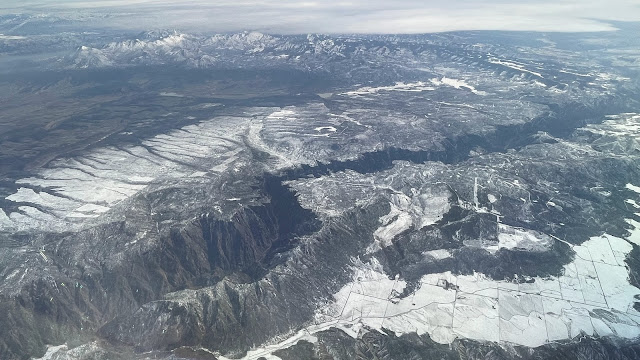 |
Ejected and overturned Kaibab Formation sitting atop the younger Moenkopi Formation on the rim of
Meteor Crater. The sudden and violent impact peeled these layers backwards out of the impact site. |
Northern Arizona is rich in geologic features including the Grand Canyon, the San Francisco Mountain composite volcano, Monument Valley, the Petrified Forest and Oak Creek Canyon. One other attraction that qualifies for this list is Meteor Crater, where a space rock the diameter of a football field slammed into the Earth's crust around 50,000 years ago. It excavated a hole 600 feet deep into the otherwise flat Coconino Plateau.
I have written on this blog about exclusive trips to the crater I have made previously. In 2010, I descended to the floor of the crater (not open to the public) with friend Drew Barringer, whose grandfather bought the property after determining that it was an impact crater. You can view the images and the post here, one of the most viewed posts I have written. And in 2015, I circumambulated the rim of the crater with the geology alumni of Northern Arizona University. See the images, graphics and geologic map and cross-sections of the crater in this post. Both posts are very instructive in understanding the magnificent preservation of this young impact crater.
 |
| Panorama of Meteor Crater looking to the south |
Now, you too can visit Meteor Crater and hike around its entire rim with a geologic expert on impact craters! The Museum of Northern Arizona's Venture Program is offering a one day trip to the crater on Sunday September 18 from 9 AM to Noon. Participants traverse the rim trail with a scientist who knows it intimately. This trail is approximately 2.5 miles long and is not generally open to the public.
The trip will be led by Dr. David Kring, a world-renowned geologist with NASA who trains astronauts in geologic studies. The link to sign-up for this trip can be accessed here. Admission to Meteor Crater is included in the trip price.
A trip description is here:
Sunday, September 18, 2022 from 9:00 AM to Noon
Join geologist Dr. David Kring on an up-close tour of the World's best preserved asteroid impact site, Meteor Crater.
Participants will get an unusually intimate tour of the impact site by one of its leading geologists. From several locations around the rim, guests will learn of early exploration efforts, the evidence that the creator was produced by a near-Earth astroid impact, the tremendous explosive energy of that cosmic impact, and how it has forced seemingly immovable rock to flow, nearly instantaneously, to excavate an extraordinary geological site.
The trip will be led by Dr. Kring, who has been conducting research and leading training activities for NASA astronauts at the crater for about 30 years. He is also one of the well-known discoverers of the Chicxulub impact crater in Mexico, which he and others linked to the extinction of dinosaurs 66 million years ago.
The hike will be on the exposed rim of the crater and last approximately 2.5 hours. Please wear sturdy hiking shoes, wear sun protection, and bring water. Guess we'll be able to visit the Barringer Space Museum and bistro following the hiking tour. Participants will drive themselves to Meteor Crater. Please park in the lower lot labeled "Mars" and meet at 9 AM in the upper lot, near the building entrance.
Meteor Crater is located approximately 35 minutes east of Flagstaff, off of I-40 east exit 233.
If you live anywhere near northern Arizona, don't miss this trip! An incredible opportunity awaits.
 |
The rim trail at Meteor Crater is not generally open to the public and gives a wonderful perspective
of the impact site. And going with an expert is a never to be forgotten experience. |





























.png)
.png)


























